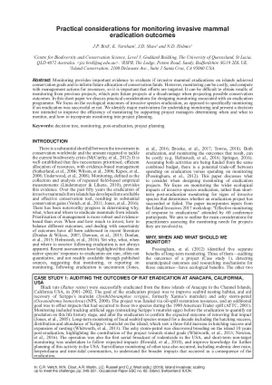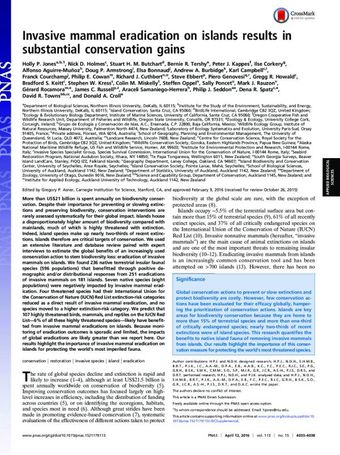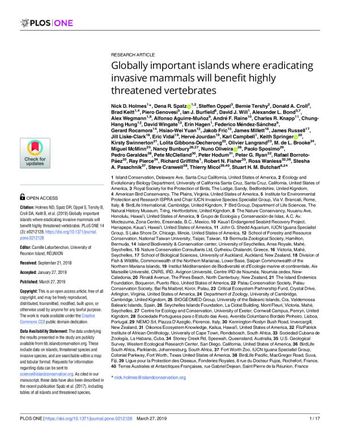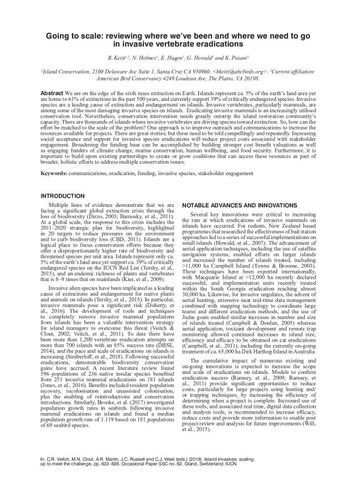Practical considerations for monitoring invasive mammal eradication outcomes
- Description:
- Monitoring provides important evidence to evaluate if invasive mammal eradications on islands achieved conservation goals and to inform future allocation of conservation funds. However, monitoring can be costly, and compete with management actions for resources, so it is important that efforts are targeted. It can be difficult to obtain results of monitoring from previous projects, which puts future projects at a disadvantage when projecting possible conservation outcomes. In this short paper we discuss practical considerations for designing monitoring associated with an eradication programme. We focus on the ecological outcomes of invasive species eradication, as opposed to speci?cally monitoring if an eradication was successful or not. We identify major motivations for undertaking monitoring and present a decision tree intended to improve the efficiency of monitoring by supporting project managers determining when and what to monitor, and how to incorporate monitoring into project planning.
- Display date:
- 2019
- Collections:
- Secretariat of the Pacific Regional Environment Programme (SPREP)
- Publisher:
- International Union for Nature Conservation (IUCN)
- Content partner:
- Secretariat of the Pacific Regional Environment Programme (SPREP)
- Availability:
- Not specified
-
Copyright status: All rights reservedFind out more about what you are able to do with this itemThis item is all rights reserved, with means you'll have to get permission from Secretariat of the Pacific Regional Environment Programme (SPREP) before using it. For more information, please see our use and reuse page.What can I do with this item?Non-infringing useNZ copyright law does not prevent every use of a copyright work, and this item may be hosted by an international institute or organisation. You should consider what you can and cannot do with a copyright work.No sharingYou may not copy and/or share this item with others without further permission. This includes posting it on your blog, using it in a presentation, or any other public use.No modifyingYou are not allowed to adapt or remix this item into any other works.No commercial useYou may not use this item commercially.
Related items
Welcome and warm Pasifik greetings
The information on this site has been gathered from our content partners.
The names, terms, and labels that we present on the site may contain images or voices of deceased persons and may also reflect the bias, norms, and perspective of the period of time in which they were created. We accept that these may not be appropriate today.
If you have any concerns or questions about an item, please contact us.



